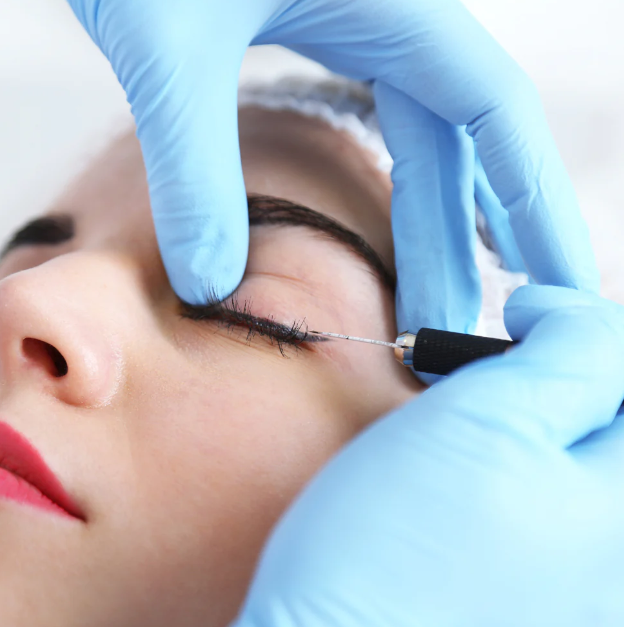
Dec 13 , 2023
The Evolution of Permanent Makeup Technology
The world of beauty and aesthetics has seen remarkable advancements, and one of the most significant developments in recent times is the evolution of permanent makeup technology. This field, blending art with cutting-edge technology, has transformed from its early rudimentary practices to a sophisticated, highly sought-after cosmetic procedure. In this article, we will explore the journey of permanent makeup technology, from its inception to the present day, and speculate on its future trajectory.
The Early Days: Origins and Basic Techniques
The concept of enhancing facial features with permanent pigmentation dates back to ancient civilizations, but the technology as we know it began to take shape in the 20th century. Initially, permanent makeup procedures were rudimentary, often using equipment and techniques borrowed from traditional tattooing. This period was characterized by limited color choices, basic equipment, and a lack of precision in application. Despite these challenges, the potential for permanent cosmetic enhancement captured the imagination of beauty enthusiasts.
Technological Advancements: Precision and Safety
As the demand for permanent makeup grew, so did the technology. The late 20th and early 21st centuries saw significant advancements. Digitalization and computerization paved the way for more precise tools, allowing for more detailed work and customization to individual facial features and skin types. Alongside, there was an increased focus on safety and hygiene, with the development of single-use needles and pigments that were safer for the skin. These advancements not only improved the quality of the results but also significantly reduced the risks associated with the procedures.
| Era | Description | Practices and Improvements |
|---|---|---|
| Ancient Times | Use of natural elements (like soot and henna) for facial enhancement in ancient civilizations. | Rudimentary methods with natural materials, lack of precision and permanence. |
| Early 20th Century | Initial formal use of tattooing equipment for permanent makeup, with basic techniques and limited color choices. | Borrowed equipment from traditional tattooing, basic application with longer-lasting but limited results. |
| Late 20th Century | Advancements in precision tools and safety with digitalization and computerization, alongside development of single-use needles and safer pigments. | Enhanced safety and hygiene practices, more precise and customized applications. |
| Early 21st Century | Introduction of advanced pigment formulations for better color retention and understanding of color theory for natural results. | Use of sophisticated pigment science and color theory for more natural and flattering results. |
| Recent Years | Innovations like microblading for natural-looking enhancements and paramedical applications such as areola restoration. | Emergence of ultra-fine techniques and therapeutic applications, broadening scope beyond cosmetics. |
| Future Prospects | Potential integration of smart technologies like AI and 3D printing for personalized permanent makeup solutions. | Expected advancements in customization, precision, and effectiveness through technology integration. |
The Role of Pigment Science and Color Theory
Pigment science has been a critical aspect of the evolution of permanent makeup technology. Early pigments often faded into unnatural colors or did not last long. Modern permanent makeup has overcome these issues through advanced pigment formulations that retain their color fidelity over time. Color theory also plays a significant role, as practitioners now have a deeper understanding of how different pigments interact with various skin tones, allowing for more natural and flattering results.
Innovations in Techniques and Applications
Recent years have seen innovations in both techniques and applications of permanent makeup. Microblading, for instance, allows for the creation of ultra-fine, hair-like strokes, ideal for natural-looking eyebrow enhancements. There's also a rise in paramedical applications of permanent makeup, such as areola restoration post-mastectomy and scar camouflage. These applications extend the scope of permanent makeup from purely cosmetic to therapeutic and reconstructive realms.
The Future: Smart Technologies and Personalized Solutions
Looking forward, the future of permanent makeup technology seems poised for even more groundbreaking innovations. We anticipate the integration of smart technologies, like AI and 3D printing, which could offer unprecedented customization and precision. Imagine a future where AI algorithms analyze facial features and recommend the most flattering eyebrow shapes or lip colors, all tailored to individual preferences and features.
Ethical Considerations and Regulatory Developments
As technology evolves, so does the need for ethical considerations and regulatory developments. The industry faces challenges in ensuring that new technologies are used responsibly and safely. The future will likely see more stringent regulations and ethical guidelines to govern the use of advanced technologies in permanent makeup.
Conclusion: A Blend of Art and Science
The evolution of permanent makeup technology is a fascinating blend of art and science. From its humble beginnings to the sophisticated procedures of today, it has continually adapted and evolved, improving both in terms of safety and aesthetic outcomes. As we look to the future, the possibilities are endless, with technology paving the way for even more personalized, safe, and effective permanent makeup solutions. This journey is not just about enhancing beauty; it's about the empowerment and confidence that come with it, marking permanent makeup technology as a significant player in the beauty industry's future.
See the Nuva Difference





